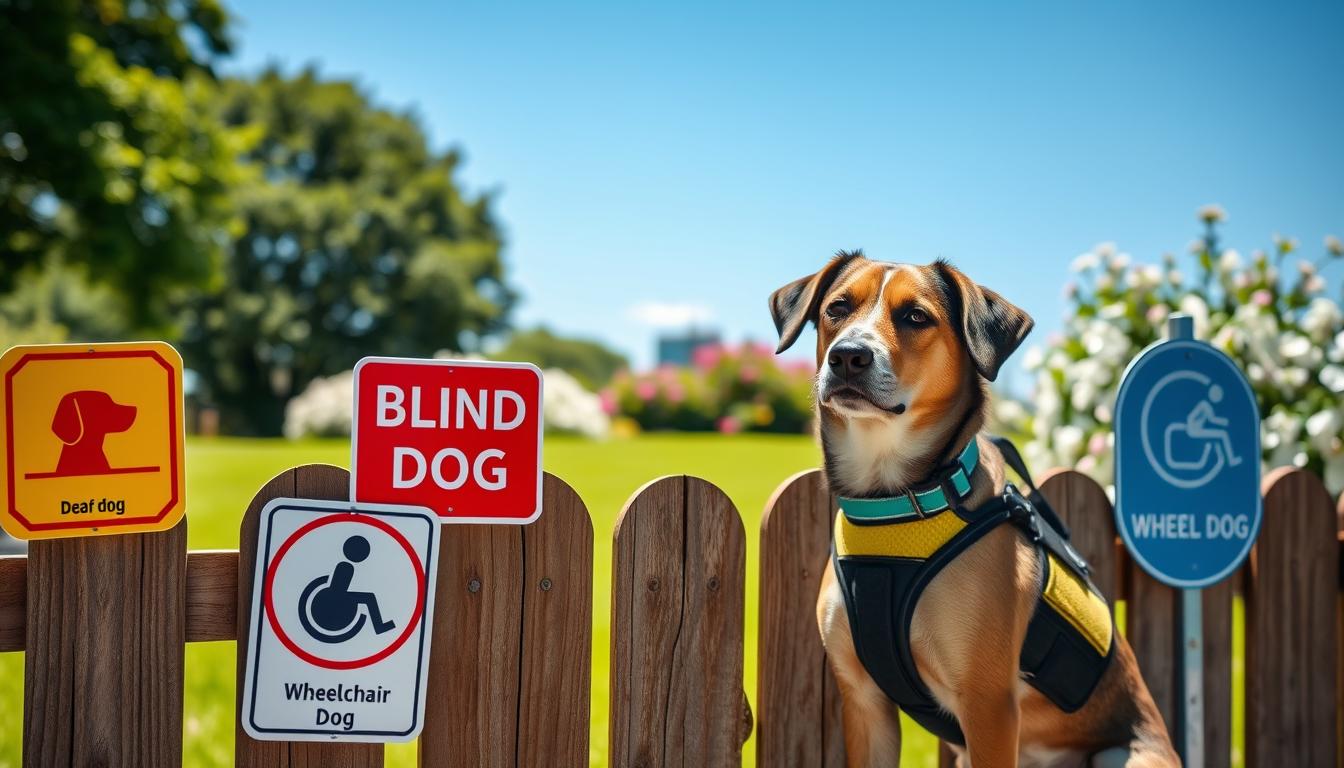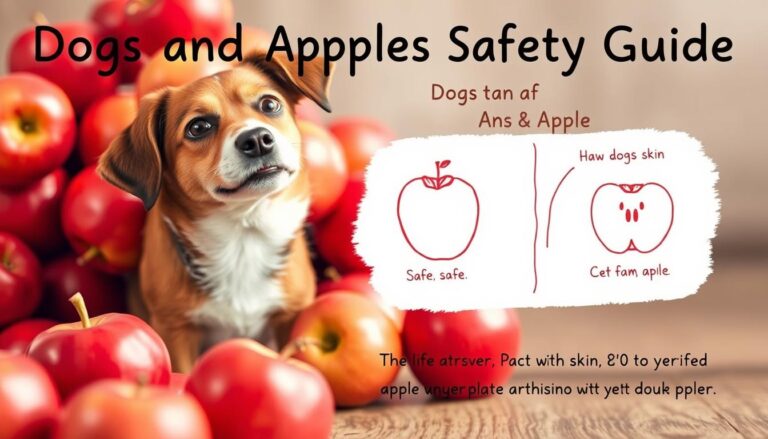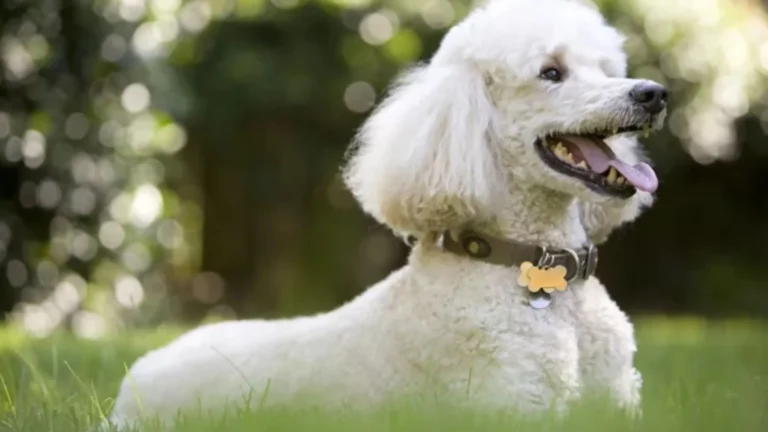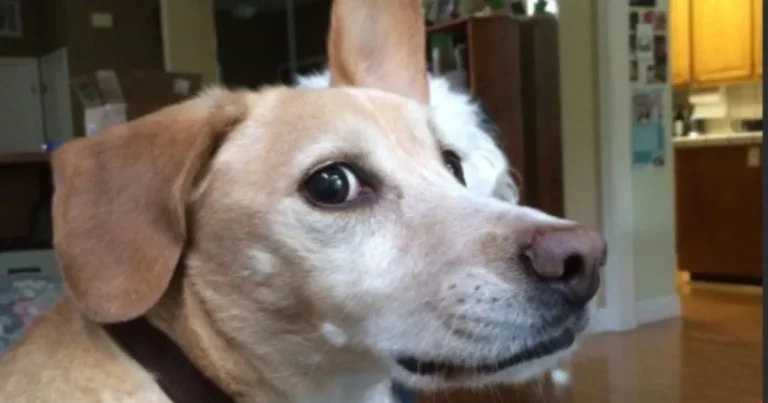How Do You Know if Your Dog Is Special Needs? Key Signs
Every dog is special in its own way, needing extra care and attention. Figuring out if your dog has special needs can be tough but very important. My journey with rescue dogs showed me how early recognition can greatly improve a pet’s life.
Special needs in dogs mean they need a different kind of care and love. They might face unique challenges in behavior, physical health, or thinking. These signs can be small changes in behavior or big physical issues.
As a caring pet owner, you might see your dog having trouble with things they used to do easily. This could be problems moving, acting differently with others, or thinking challenges. Spotting these signs is the first step to giving your dog the love and support they need.
This guide will help you understand canine special needs better. We’ll look at the main signs, how to diagnose them, and how to help. Whether you’re facing these issues or just want to learn, knowing about special needs in dogs is a sign of love and dedication.
Table of Contents
Understanding Special Needs in Dogs: A Comprehensive Overview
Dogs can face unique challenges that need special care. Canine cognitive disabilities and developmental issues are complex. Knowing about these challenges helps pet owners support their dogs better.
Recognizing special needs in dogs means looking at their physical, mental, and behavioral health. Some dogs have challenges that differ from typical canine development.
Defining Special Needs in Canines
Special needs dogs have conditions that affect their daily life. These can include:
- Cognitive impairments
- Physical disabilities
- Neurological disorders
- Sensory challenges
Types of Special Needs Conditions
Diagnosing dog developmental issues needs careful observation and professional help. Some common special needs conditions are:
- Cognitive Dysfunction Syndrome – Similar to dementia in humans
- Neurological disorders affecting movement
- Developmental delays
- Sensory processing challenges
Impact on Daily Life
Canine cognitive disabilities change a dog’s interactions and abilities. Dogs with special needs may need:
- Specialized training
- Adaptive equipment
- Modified living environments
- Consistent medical support
Every special needs dog is unique and deserves individualized care and understanding.
Understanding these conditions helps pet owners give compassionate, targeted support. This support improves their dog’s quality of life and overall well-being.
Physical Signs and Symptoms to Watch For
Watching for physical disabilities in dogs means paying close attention to how they move and act. Dogs with special needs often show small changes that hint at bigger health issues. These signs can sneak up on you, so it’s important to keep a close eye.
Some key physical indicators to watch include:
- Unsteady or wobbly walking patterns
- Sudden stumbling or loss of balance
- Unexplained muscle weakness
- Tremors or involuntary muscle movements
- Difficulty rising or climbing stairs
Neurological problems can show up in many ways. Small dog breeds are especially at risk for physical disabilities that can affect their movement and happiness. Your dog might seem in pain or extra sensitive when they move, which could mean something serious is going on.
Physical disabilities in dogs can come from many places. This includes genetic problems, injuries, or age-related issues. Keep an eye out for changes in your dog’s:
- Coordination
- Reflexes
- Muscle strength
- Posture
If your dog’s symptoms keep getting worse or don’t go away, see a vet right away. Catching dog neurological disorder symptoms early can really help with treatment and care.
Behavioral Indicators of Special Needs in Dogs
Spotting dog disabilities means watching how your pet acts. Dogs with special needs often act differently in social situations. Knowing these signs helps you care for your dog better.
- Unusual social interactions
- Repetitive movement patterns
- Atypical communication responses
- Unexpected emotional reactions
Changes in Social Interaction
Special needs dogs might act differently around people. They might pull away, get too aggressive, or seem really scared. Some dogs seem lost or have trouble connecting with others.
Unusual Repetitive Behaviors
Repetitive actions are big signs for special needs dogs. Look out for:
- Continuous pacing
- Obsessive tail chasing
- Rhythmic rocking
- Persistent licking or spinning
Communication Challenges
When dogs have trouble talking, it’s a big clue. Your dog might:
| Communication Challenge | Potential Indication |
|---|---|
| Reduced responsiveness to commands | Potential cognitive dysfunction |
| Excessive or unusual vocalization | Neurological or emotional distress |
| Difficulty understanding basic signals | Possible sensory processing issues |
Getting a vet’s opinion is key to figuring out what your dog needs.
Neurological Disorders and Their Manifestations
Dog neurological disorder symptoms can be complex and hard to spot. It’s key to know these signs early for your dog’s health.
Small dog breeds face a higher risk of neurological issues. These problems show up in many ways, affecting your pet’s health and happiness.
- Seizures and tremors
- Unusual head tilting
- Balance and coordination problems
- Sudden changes in behavior
- Unexplained muscle weakness
Spotting dog developmental issues needs careful watching and a vet’s help. Look out for these signs:
| Neurological Symptom | Potential Significance |
|---|---|
| Persistent head pressing | Possible brain dysfunction |
| Uncontrolled muscle movements | Neurological disorder indication |
| Sudden cognitive changes | Potential neurological impairment |
Vets use special tools to find these disorders. Spotting symptoms early can greatly help your dog’s health and treatment.
Neurological health needs careful watching and expert help.
How Do You Know if Your Dog Is Special Needs: Common Indicators
It can be hard for pet owners to spot special needs in dogs. Knowing the early signs and symptoms is key to caring for your pet. Dogs with special needs need extra care to live well.
Early Warning Signs
Start by looking for small changes in your dog’s behavior and health. Some early signs include:
- Unusual lethargy or decreased activity levels
- Sudden changes in eating or drinking habits
- Difficulty moving or walking
- Unexplained weight loss or gain
- Increased sensitivity to sounds or touch
Progressive Symptoms
As special needs conditions grow, you’ll see more obvious signs. These symptoms can include:
| Symptom Category | Specific Signs |
|---|---|
| Cognitive Changes | Disorientation, confusion, reduced learning ability |
| Behavioral Shifts | Increased anxiety, changes in social interaction |
| Physical Indicators | Muscle weakness, coordination problems |
When to Seek Professional Help
It’s important to know when to see a vet for your dog’s special needs. Look for:
- Persistent changes lasting more than a few weeks
- Significant alterations in personality or behavior
- Unexplained physical symptoms
- Apparent pain or discomfort
- Regression in previously learned behaviors
Early detection and intervention can significantly improve your dog’s quality of life and management of special needs conditions.
Cognitive Dysfunction and Mental Health Concerns

As your dog gets older, it’s key to spot any disabilities early. Canine cognitive dysfunction is a serious issue that affects older dogs. It’s like human dementia but in dogs. This condition can really change your dog’s life and how they act every day.
Dogs with cognitive disabilities show some clear signs:
- They get confused and lost easily
- Their sleep patterns change a lot
- They don’t want to play with family as much
- They don’t respond to commands they used to know
- They seem anxious or restless for no reason
Mental health issues in dogs are tricky and need close watching. Vets say about 28% of dogs between 11-12 years old might have some cognitive decline. And up to 68% of dogs over 15 might too.
“Understanding your dog’s mental health is as important as addressing physical symptoms.” – Dr. Sarah Richards, Veterinary Neurologist
Spotting these signs early helps a lot. You can try to keep your dog’s mind active. Also, keeping a regular routine and getting help from the vet can make a big difference. This way, you can help your dog feel better and live a happier life.
The Role of Professional Diagnosis and Assessment
Diagnosing dog developmental issues needs a detailed approach. It combines expert knowledge, advanced tech, and close observation. Professional assessment is key to spotting dog disabilities and giving the best care for your special needs pet.
If you think your dog has special needs, a vet check is the first important step. It helps understand their unique health issues.
Veterinary Evaluation Process
A detailed vet assessment includes several steps:
- Comprehensive physical check-up
- Detailed look at your dog’s medical history
- Observing and analyzing their behavior
- Special tests for the nervous system
Advanced Diagnostic Tools
Vets use advanced tools to find developmental and neurological problems:
| Diagnostic Tool | Purpose | Key Information |
|---|---|---|
| 3T MRI | Neurological Imaging | Detailed brain and nervous system visualization |
| Blood Panel | Metabolic Assessment | Hormone and enzyme level analysis |
| Genetic Testing | Inherited Condition Screening | Identifying potential genetic disorders |
Creating a Personalized Care Plan
After finding out about your dog’s issues, vets work with you to make a care plan. This plan meets your dog’s specific needs, focusing on:
- Specific medical treatments
- Adaptive lifestyle tips
- Regular check-ups and support
- Rehabilitation methods
Early detection and professional assessment are crucial for managing your dog’s special needs well.
Supporting Your Special Needs Dog
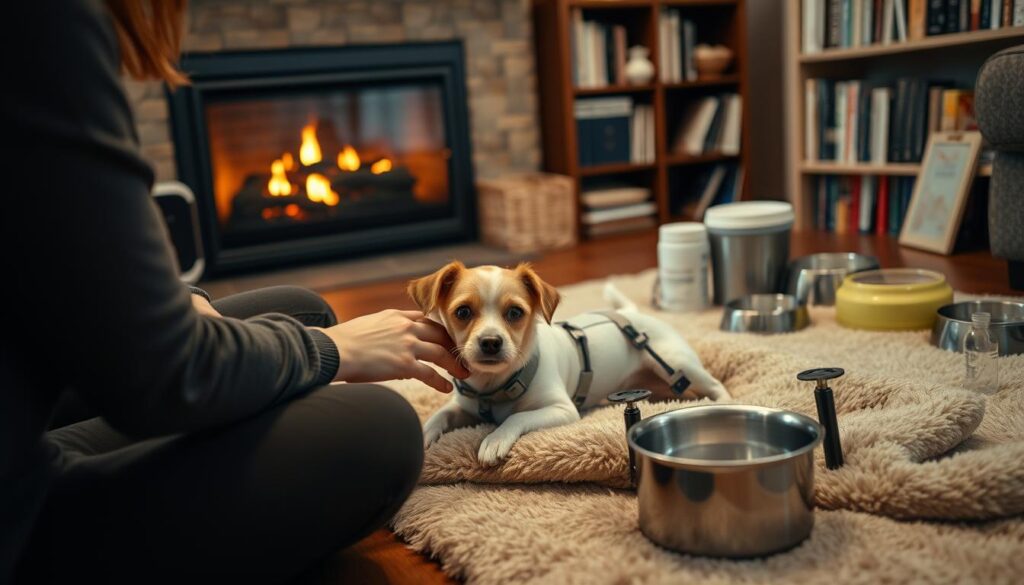
Caring for special needs pets needs a lot of dedication and patience. You must understand your dog’s unique challenges well. Creating a supportive environment is key for their well-being and happiness.
First, figure out what your dog needs and make a care plan. This plan should cover both physical and emotional needs. It helps you support your dog better.
- Create a safe home environment with minimal obstacles
- Use specialized equipment like mobility harnesses or adaptive devices
- Implement consistent daily routines
- Provide gentle, positive reinforcement training
Good nutrition is also vital for dogs with special needs. Talk to your vet to make a diet plan that fits your dog’s health needs. Specialized nutrition can greatly boost your dog’s energy and health.
Emotional support is just as crucial. Spend time with your dog, use calming methods, and keep their environment calm. Regular vet visits and monitoring help you adjust your care as needed.
“Every special needs dog deserves love, patience, and individualized care.” – Veterinary Specialist
Remember, every dog is different. Your love and care can make a huge difference in your special needs pet’s life. It helps them live well despite their challenges.
Environmental Adaptations and Accommodations
Caring for special needs pets means making your home safe and comfy for them. You can turn your home into a safe haven for dogs with disabilities. This is done by making changes that meet their special needs.
Creating a supportive home for dogs with disabilities involves several important steps:
- Install night lights to reduce disorientation for dogs with vision impairments
- Use non-slip mats on slippery floors to prevent accidents
- Create designated safe zones for dogs experiencing anxiety
- Implement ramps or pet stairs for dogs with mobility restrictions
Mobility aids are key for helping special needs dogs. Here are some tools to consider:
| Adaptation Type | Purpose | Recommended For |
|---|---|---|
| Orthopedic Dog Beds | Provides joint support | Arthritic or aging dogs |
| Wheelchair Supports | Enables movement | Dogs with paralysis |
| Elevated Food Bowls | Reduces neck strain | Dogs with neck/back issues |
Changes to your home’s sensory environment can greatly improve your dog’s life. Soft background music, regular routines, and fewer loud noises help dogs with cognitive or neurological issues feel calm.
Every special needs dog is different. Talk to vets to create a plan that fits your dog’s needs perfectly.
Quality of Life Considerations and Management Strategies
Caring for special needs pets is a big job. It involves medical care, daily routines, and emotional support. Your dedication can make a huge difference in your dog’s life and strengthen your bond.
Helping dogs with disabilities needs patience and planning. Each dog is different and needs special care and strategies.
Daily Care Routines
- Create a consistent schedule with predictable feeding times
- Develop modified exercise routines matching your dog’s capabilities
- Establish comfortable sleeping and resting areas
- Use adaptive equipment like mobility harnesses or specialized bedding
Medical Management
| Management Strategy | Key Considerations |
|---|---|
| Medication Tracking | Use digital reminders, pill organizers |
| Regular Check-ups | Quarterly veterinary assessments |
| Symptom Monitoring | Maintain detailed health journal |
Emotional Support Techniques
Emotional well-being is key for special needs dogs. Positive reinforcement, gentle touch, and understanding their limits can help. This can reduce anxiety and improve their life quality.
- Practice calm, consistent training methods
- Use gentle touch and reassuring verbal cues
- Create low-stress environments
- Engage in adaptive play activities
With these strategies, you can give your special needs dog the best care. They will be comfortable and supported throughout their life.
Conclusion
Figuring out if your dog has special needs is key to giving them the best care. Your effort can turn tough times into chances for a closer bond and real support. Spotting early signs and getting expert advice helps you make a safe space just for them.
Looking after special needs pets takes patience, love, and being flexible. Each dog faces unique challenges, but with the right plan and care, they can overcome them. With vet help and your love, your dog’s life can get much better.
Being open to learning and caring for your dog shows the strong bond between humans and dogs. Even when it feels hard at first, the joy you share is endless. Your love and support create unforgettable moments and deep connections.
Every special needs dog wants to live a happy life. With the right info, help, and commitment, you can make that happen. Your hard work truly changes their world for the better.

